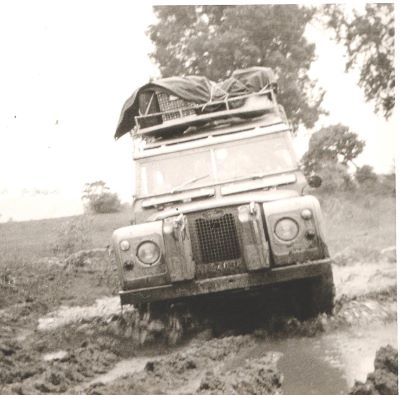Rain and Mud
Marianne Grisez AMMM U.S.A. 04.11.2022
Marianne, a volunteer nurse from California, member of Lay Mission Helpers, was so sorry Sr. Ann Flynn had been “cheated” out of experiencing the Big Rains at Gambo in Ethiopia that she wrote her the following graphic description of what she had missed. First published in the MMM Magazine in 1976.
 To understand what rain is, you must experience a rainy season. Being an American, where we do not have such things, I have been fortunate enough to have the opportunity to live in a country where there is such a season. Most countries in Africa have one. It does not matter which land you are in. What counts is the amount of RAIN.
To understand what rain is, you must experience a rainy season. Being an American, where we do not have such things, I have been fortunate enough to have the opportunity to live in a country where there is such a season. Most countries in Africa have one. It does not matter which land you are in. What counts is the amount of RAIN.
Before I came to Ethiopia, a heavy rain meant a sudden summer evening thunder and lightening storm. It would rain hard for a short time and often the thunder was much more than the amount of water. Here in Gambo, Ethiopia, we have two Rains. The small rains are usually in February or March. It rains everyday for a short while or all day for several days in the week. The Big Rains vary each year but occur generally from July through August and September. In a typical year it rains every day, all day. The moisture on the 15 miles of dirt-filled road from the main road to Gambo makes a thick, gooey mud. It is only passable in a Land Rover or jeep-type vehicle. This is because of the rough terrain, interspersed with muddy patches, often knee-deep.
On the last day of August, I got my first taste of being stuck in the mud in the rainy season. It is a rare privilege and reminded me of the days when as children we made mud pies. At dusk our Land Rover was returning to Gambo from Jigessa, another mission two hours journey away. We had safely crossed the first river without difficulty (no bridge) and rounded a bend about to enter the worst part of the trip. It is a low-lying place between two groups of trees and the mud is thick, black, glue-like muck. We put the car into four-wheel drive and forged ahead. Right in the middle of this mess the driver slowed down and stopped. In trying to start again we only managed to drive the back wheels into the mud up to the axle and springs. The three of us hopped out, shovel in hand and started to dig out the back wheels. It was first suggested to place some boards under the wheels and then try and push the car unto the boards and then out. But the wheels were too fast in the mud. I forgot to mention that there were three of us and the back of the Land Rover was full of firewood which added to the weight which caused the car to sink so low.
By this time a group of local people had come upon the scene and were watching with great interest as the three of us with shovel, pick and bare hands, were trying to clear the goop from the back wheels. The wheels dug out, we tried again, but unsuccessfully to free the car. We only had one more alternative – to unload all the firewood and have these ten men watching us push the car out. After much watching, everyone finally pitched in and helped us unload and push the car and reload it. We three passengers were covered from elbow to ankle in soggy, muddy clothes. In the process it had become dark and we, of course, did not have a flashlight. We broke the shovel, lost the jack, but learned first-hand about the rainy season. The story ended happily with finding the jack and arriving home safely, only an hour late.
The more experienced members of our community say it is even more interesting in the rain without a shovel and the wood. This is when you really get an appreciation of rain, mud and land rovers. When I am back home in California the summer storms will seem only a tiny example of the Ethiopian rains. The adventure must be appreciated first hand only. Come and join the fun!
SEE ALL BLOG POSTS
